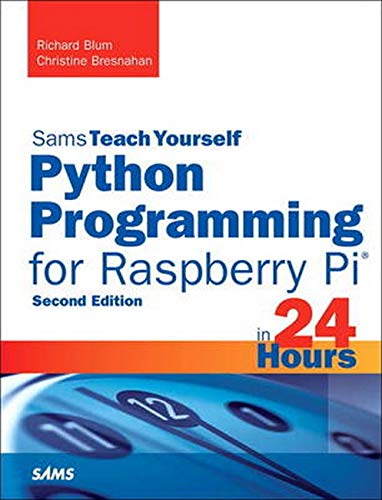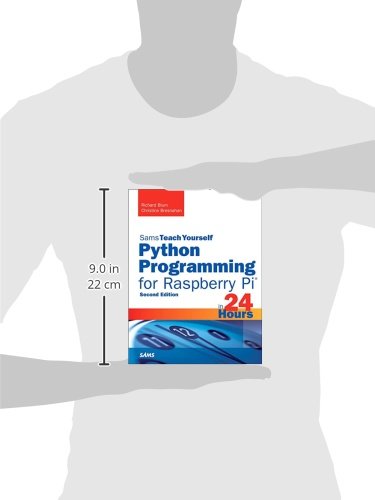Customer Services
Copyright © 2025 Desertcart Holdings Limited
Desert Online General Trading LLC
Dubai, United Arab Emirates



Python Programming for Raspberry Pi, Sams Teach Yourself in 24 Hours
E**B
Not bad - but pretty basic and over long.
I was looking for a book that a) would teach me Python to a decent level and b) would do so in the context of the Raspberry pi - and this book together with the reviews sounded like a good option. Having been through the book, however, I'm afraid I was very disappointed and I don't think it does either job particularly well.I was a professional developer many years ago using 3G languages (so no experience of Object Oriented or GUI programming) and I thought I should start off with a "primer" level book that would give me a good grounding in the fundementals of Python, but unfortunately I was wrong. I found this book to be very basic and it gives more of a nod to Python fundementals rather than a good gounding - so don't expect much coverage of how Python fundamentals really work (e.g. how OO features like classes, inheritance, polymorphism, operator overloading etc.). These concepts are mentioned, and there is brief coverage of how some of these things can be used - but I wouldn't say that a good grounding is offered, particularly given that the book is nearly 600 pages long.So, I went through the first seven "Hours" (chapters) in about 90 minutes. Hours 8 to 18 were a little more challenging but were covered in about four hours - and I rarely bothered with the exercises since most were very basic and it was pretty obvious what the outcomes would be.Another problem (for me at least) was that as I said, the fundamentals of Python are only briefly covered leaving the reader with little true understanding of how "good" Python code should be written. In addition, the examples are all based on the reader using a text editor (nano or the IDLE editor) rather than a decent Integrated Development Environment (IDE) like Geany or Thonny (the former of which has been readily available since the first Raspberry Pi was released) and either of which would make life easier for the reader. Part of the reason for the approach taken appears to be the authors wanting the reader to make and correct errors "the hard way" without any assistance from an IDE, but personally I found the approach to be time wasting.Also, the bulk of the material is pretty generic, and although the console outputs were taken from a Raspberry Pi, I believe almost all of the exercises would have run equally well on any modern platform. Hours 1 to 3 are somewhat Pi-specific, but only because Hours 1-2 give basic Raspberry Pi setup information (that is covered perfectly well by raspberrypi.org in any case) and Hour 3 (Setting Up a Programming Environment) is largely irrelevant in my view as a fully functional Python programming environment (complete with two good IDEs) already comes as standard with Raspbian. In fact, the only Hour that is truly Pi-specific and useful in my view, is Hour 24 (Working With Advanced Pi/Python Projects) which covers interfacing with the Pi's GPIO interface.I realise that my circumstances are different to most, but in my view the material covered does not require the nearly 600 pages used by the book, and it's approach is quite outdated. The book may well be more useful for a complete beginner, and I may be being over-critical, but my advice to any professional developer looking to learn Python would be to look elsewhere - which is what I am now doing.
B**Y
Good book
Lots of examples to follow
C**E
Best support for you Pi
If you have a pi this book is the best thing you will buy. I still refer to it all the time.
M**.
Easy to follow
As with all of my other Sams books this is easy to follow from the basics to the advanced. Clear instructions and well worth a go if you are looking to improve your programming skills on the Pi
S**O
Good
Good
Trustpilot
1 week ago
1 day ago